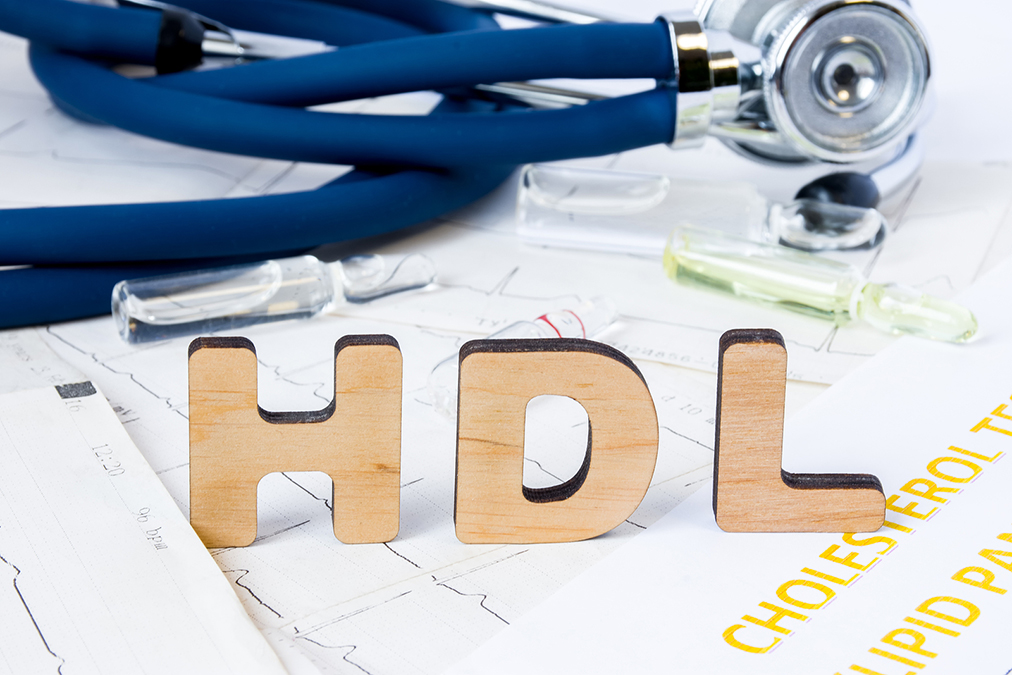 HDL (good cholesterol) has long been viewed as an important lifesaver because it removes LDL (bad cholesterol) from the bloodstream.
HDL (good cholesterol) has long been viewed as an important lifesaver because it removes LDL (bad cholesterol) from the bloodstream.
But some new studies have indicated that HDL does nothing to prevent stroke and heart attack.
Scientists from the University of Texas Southwestern Medical Center set out to investigate this dilemma.
And in a new study, published in the journal Circulation, they reveal that one letter makes all the difference.
The scientists tested two different measures of HDL cholesterol.
They obtained the data they analyzed from four large studies: the Dallas Heart Study, the Atherosclerosis Risk in Communities Study, the Multi-Ethnic Study of Atherosclerosis, and the Prevention of REnal and Vascular ENdstage Disease Intervention Trial.
Altogether, they used the data of 15,784 subjects who they tracked between 8 and 12 years to determine the subjects’ health outcomes.
The two different ways of testing HDL cholesterol yielded different results.
The most common way to test HDL is to measure the amount of HDL in our blood. This measurement is called HDL-C.
Another test is called HDL-P. This counts the number of HDL particles that circulate through our blood.
Because each particle contains different amounts of HDL cholesterol, these tests often result in different HDL concentrations.
For example, if you have twice as many HDL particles as I have, but each of my HDL particles contains twice as much HDL cholesterol as yours do, your HDL-P is higher, but our HDL-C scores are the same.
This study showed that HDL-P scores were more important for heart health than the commonly used HDL-C scores were.
Compared with the people with the lowest HDL-P scores, those with the highest scores were 37 percent less likely to suffer a heart attack and 34 percent less likely to suffer a stroke.
But there is a third type of cholesterol much more dangerous than the LDL cholesterol. And HDL cannot get rid of this one. The only way to tackle this third type of cholesterol is to cut out ONE ingredient, explained here…

 Overcoming IBD
Overcoming IBD Multiple Sclerosis
Multiple Sclerosis Banishing Bronchitis
Banishing Bronchitis Gum Disease Gone
Gum Disease Gone Overcoming Onychomycosis
Overcoming Onychomycosis Neuropathy No More
Neuropathy No More The Prostate Protocol
The Prostate Protocol Brain Booster
Brain Booster
 Ironbound
Ironbound
 Solution for Shingles
Solution for Shingles
 The Bone Density Solution
The Bone Density Solution
 The Ultimate Healing Protocol
The Ultimate Healing Protocol
 The Parkinson's Protocol
The Parkinson's Protocol
 The Chronic Kidney Disease Solution
The Chronic Kidney Disease Solution
 Overthrowing Anxiety
Overthrowing Anxiety The Fatty Liver Solution
The Fatty Liver Solution The Hypothyroidism Solution
The Hypothyroidism Solution
 The End of Gout
The End of Gout The Blood Pressure Program
The Blood Pressure Program
 The Oxigized Cholesterol Strategy
The Oxigized Cholesterol Strategy
 Stop Snoring And Sleep Apnea Program
Stop Snoring And Sleep Apnea Program
 The Arthritis Strategy
The Arthritis Strategy The Vertigo & Dizziness Program
The Vertigo & Dizziness Program The 3-Step Diabetes Strategy
The 3-Step Diabetes Strategy Hemorrhoids Healing Protocol
Hemorrhoids Healing Protocol The Erectile Dysfunction Master
The Erectile Dysfunction Master Weight Loss Breeze
Weight Loss Breeze The IBS Program
The IBS Program The Insomnia Program
The Insomnia Program The Migraine and Headache Program
The Migraine and Headache Program The Neck Pain Solution
The Neck Pain Solution The Menopause Solution
The Menopause Solution The Ejaculation Master
The Ejaculation Master The TMJ Solution
The TMJ Solution The Acid Reflux Solution
The Acid Reflux Solution The Fibromyalgia Solution
The Fibromyalgia Solution The Psoriasis Strategy
The Psoriasis Strategy